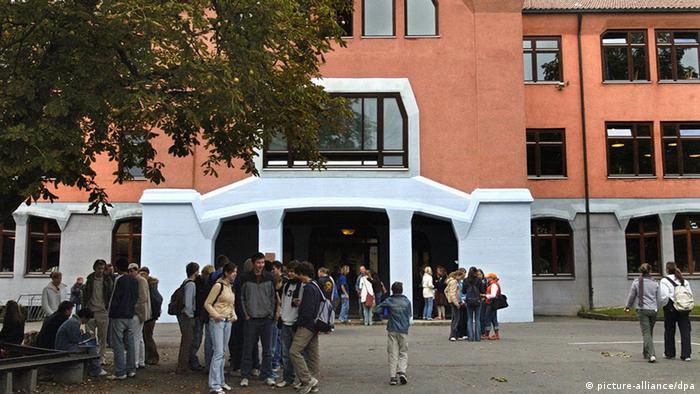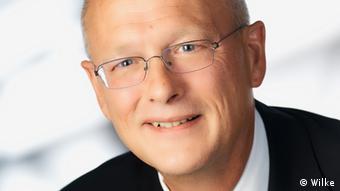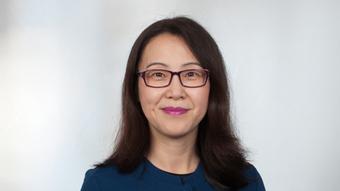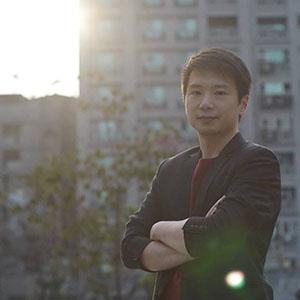UChicago’s community—and impact—extends far beyond our campus. Gifts to #UChicago24 help advance our global initiatives, from the #DehliChallenge at UChicago Urban Labs to the recently-announced Pearson Institute for the Study and Resolution of Global Conflicts. https://24hourimpact.uchicago.edu/
-----
了不起的校友、校長。
Phil Knight - Wikipedia, the free encyclopedia
https://en.wikipedia.org/wiki/Phil_Knight
Philip Hampson "Phil" Knight (born February 24, 1938) is an American business magnate and philanthropist. A native of Oregon, he is the co-founder and ...
In the news
Stanford taps Nike's Phil Knight for $400 million gift, creates world's biggest scholars program
San Jose Mercury News - 9 hours ago
Stanford launches Knight-Hennessy Scholars Program
Global, multidisciplinary graduate scholarships are backed by a major gift from Philip H. Knight.
Stanford University announced today the Knight-Hennessy Scholars Program, a graduate-level scholarship to prepare a new generation of global leaders with the skills to address the increasingly complex challenges facing the world.
The program is named for alumnus Philip H. Knight, MBA '62, philanthropist, American businessman and co-founder of Nike Inc., who is contributing $400 million, and Stanford's outgoing 10th President John L. Hennessy. The program builds on Stanford's preeminent position in higher education, with seven globally ranked multidisciplinary graduate schools that foster service, collaboration, innovation and entrepreneurship.
Ambitious in scope and scale, Knight-Hennessy Scholars will annually admit 100 high-achieving students with demonstrated leadership and civic commitment, who are nominated by their undergraduate universities. The goal is to select students from a wide range of backgrounds and nationalities. Upon admittance to Stanford's graduate programs, scholars will receive funding for three years to pursue master's or doctorate level degrees, or professional programs along with education in leadership, innovation and other curricula designed to develop scholars' capacity to lead ambitious change in a complex world.
"We wanted to create something enduring, that would be unlike anything else currently available to the world's brightest minds, and that would make the biggest impact possible toward solving global challenges affecting the environment, health, education and human rights," said Stanford President John Hennessy, who will serve as the program's inaugural director after stepping down from his current role as president. "We will bring together outstanding, courageous scholars to benefit from Stanford's innovative educational environment, who then go on to lead governments, businesses, nonprofits and other complex organizations and develop creative solutions to effect positive change."
With a $750 million endowment, the Knight-Hennessy Scholars will be the largest fully endowed scholarship program in the world. More than 80 percent of the endowment will directly support the scholars, fully funding their graduate education and living expenses. The program represents the largest single increase in student financial aid in Stanford's history. The scale of funding for the Knight-Hennessy Scholars will ensure continuity for generations to come.
A faculty advisory committee will help guide admission and curriculum criteria that will be available in the winter of 2017. Stanford will begin accepting applications from prospective scholars – students who have completed at least three years of undergraduate education – in summer 2017 and admit its first scholars for fall 2018.
Knight-Hennessy Scholars integrates the best aspects of other distinguished scholarship programs, but goes beyond them to offer a diverse, multidisciplinary and interdisciplinary education that is a hallmark of Stanford. Ranked among the top five in the world, Stanford's seven graduate and professional schools in which scholars will enroll include law; business; medicine; engineering; humanities and sciences; education; and Earth, energy and environmental sciences. Scholars pursuing PhD or MD degrees will have the option to receive funding beyond three years.
The scholars will benefit from Stanford's location in the innovation center of the world, with additional courses in design thinking, innovation and entrepreneurship. Knight-Hennessy Scholars will also be exposed to leadership training and development, residential experiences, immersive educational opportunities, additional degree opportunities focused on public policy and problem-solving at scale. A social startup fund will be created to seed nonprofit startups launched by Knight-Hennessy alumni.
The Knight-Hennessy Scholars program has strong support from the Stanford Board of Trustees and Stanford's next president.
"I greatly admire the vision and ambition of the Knight-Hennessy Scholars, which leverages the full breadth and scope of Stanford as a comprehensive research university. As the beneficiary of a Rhodes Scholarship, I can attest to the value of such programs to provide a broad base of knowledge and exposure to a dynamic, international network of peers," said Marc Tessier-Lavigne, who will succeed Hennessy as Stanford's 11th president on Sept. 1. "As incoming president, I'm looking forward to working closely with John as we develop, define and grow a program that will inspire leadership for the betterment of humanity."
Knight's founding gift to the Knight-Hennessy Scholars endowment is the largest cash gift from an individual to Stanford. Other gifts include a $100 million donation from Robert King, MBA '60, and his wife, Dorothy, and $50 million from Stanford Board of Trustees Chair Steven Denning, MBA '78, and his wife, Roberta, AB '75, MBA '78. In total, dozens of Stanford benefactors have given more than $700 million to support the program, more than 90 percent of the endowment goal.
Knight has long been a supporter of Stanford. In 2006, he made a major gift to Stanford Graduate School of Business and has provided substantial support for endowed professorships and Stanford Athletics. With this gift, Knight wanted to honor Hennessy's 16-year tenure leading Stanford and to fund an initiative of scope and scale at an institution where he was confident the graduates would go on to make a real difference.
"John and I dream of a future 20, 30 or 50 years from now, when thousands of graduates – who can think outside the box as skilled problem-solvers – will be working together for a more peaceful, habitable world," said Knight. "The Knight-Hennessy Scholars program is a fitting tribute to John, one of the great academic leaders of our time."
The $100 million gift from Robert King and his wife, Dorothy, will fund a cohort of scholars from less economically developed regions of the world. It will also support the King Global Leadership Program, a distinctive training and development curriculum in which all Knight-Hennessy Scholars will participate to complement their core degree studies.
"While we have seen great achievements in this century, future progress will depend upon our ability to tackle issues such as global poverty. By identifying rising leaders from around the world and exposing them to real-life challenges, the Knight-Hennessy Scholars program will equip scholars to lead ambitious change," said King.
Steven Denning and his wife, Roberta, have provided a gift of $50 million to construct Denning House in the heart of the Stanford campus, a building that will become the convening hub for the new community of Knight-Hennessy Scholars. The 300 Knight-Hennessy Scholars will be housed and integrated within the Stanford graduate community of 9,000 students.
"The Board of Trustees unanimously endorsed the Knight-Hennessy Scholarship and is excited about its potential. Stanford instills in its students an emphasis on interdisciplinary education, innovation, creative problem solving and entrepreneurial thinking. Knight-Hennessy Scholars will benefit from that embedded culture, and in turn, they will enrich the Stanford community, and ultimately, the world," said Denning.
Jeff Wachtel, who has served as chief of staff to Hennessy throughout his presidential tenure, will be the Knight-Hennessy Scholars' first executive director.
Under Hennessy's leadership, Stanford has undertaken major new academic initiatives to address important global challenges of this century. Interdisciplinary teaching and research has expanded dramatically with the creation of new cross-school collaborative programs in human health, international affairs, environmental science and other areas.
Hennessy has also emphasized building stronger connections between the university, governments, business and nonprofit organizations, to help facilitate the transfer of university discoveries and knowledge more rapidly to the benefit of all of society. Such knowledge transfer was the original emphasis of Jane and Leland Stanford when they founded the university, which celebrates its 125th anniversary this year.
Further information about the Knight-Hennessy Scholars is available online at knight-hennessy.stanford.edu.











